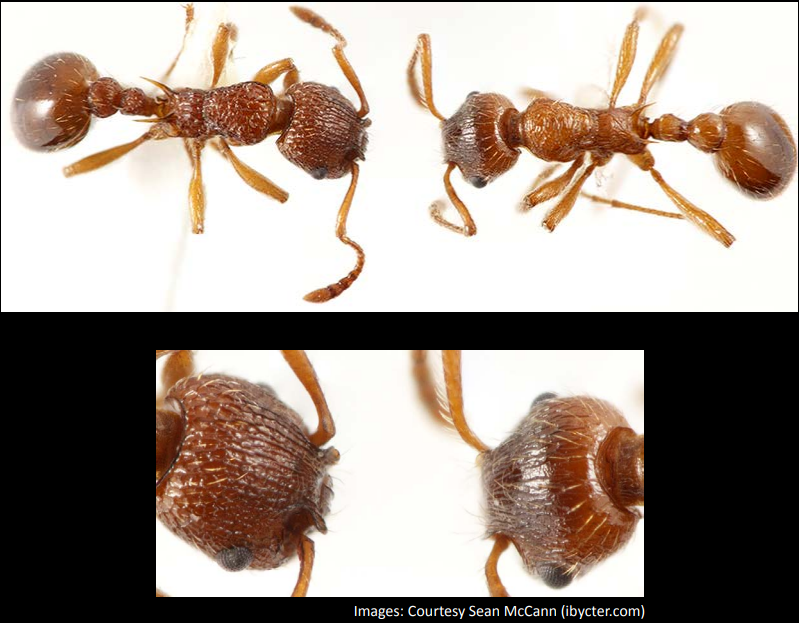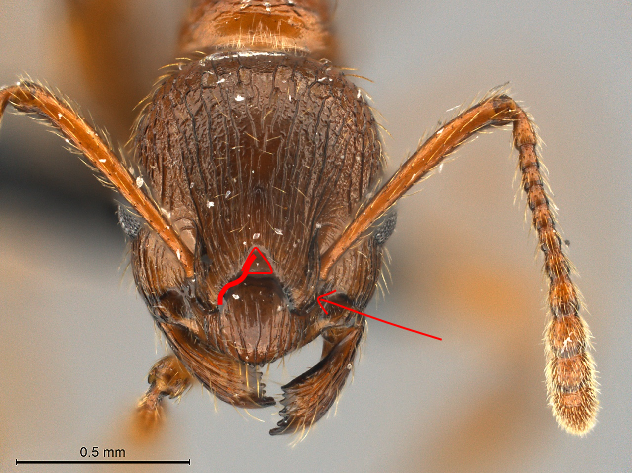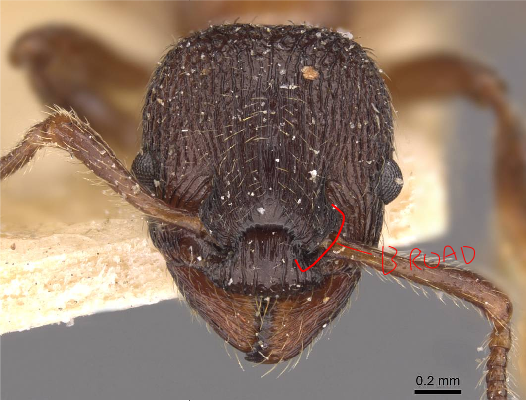- Formiculture.com
- Forums
- Gallery
- Members
- Member Map
- Chat

Myrmica sp
Started By
Mortamir
, May 21 2018 8:24 AM
3 replies to this topic
#1
 Offline
-
Posted May 21 2018 - 8:24 AM
Offline
-
Posted May 21 2018 - 8:24 AM
I am looking for information on IDENTIFYING some Myrmica sp. What part(s) exactly do I need to get pictures of to correctly id them? If possible post pictures of those parts.
#2
 Offline
-
Posted May 21 2018 - 5:37 PM
Offline
-
Posted May 21 2018 - 5:37 PM
Oh no Myrmica.
Anyways there are 7 species of Myrmica in Washington, 5 native (M. aleskensis, M. incompleta, M. fracticornis, M. crassirugis, M. brevispinosa) 2 invasive (M. rubra, M. specioides).
In the Puget Sound region M. incompleta, M. spcioides, and M. rubra are likely present, probably M. brevispinosa as well and possibly M. fracticornis. The others tend to occur more inland or south and I can't really confirm.
Easiest one to separate from the bunch, M. specioides has a bent scape (The first large segment of the antenna connecting it to the head).

Myrmica specioides (left), Myrmica rubra (right)
The two invasives are bright red, much more brilliant than most of the native species. Queens are 6mm & 5mm, workers ~4mm.
M. rubra also has frontal lobes that look sort of funnel shaped.

M. incompleta black - dark red and various inbetweens (The ones around here seem to have completely black queens or black queens with a dark red petiole). They have large frontal lobes (The extensions from the head over the antenna sockets). Closest you will confuse it with is M. aleskensis, which occurs more inland and is smaller. A few other small details you probably can't tell without a microscope. Queens are 6-9mm

M. brevispinosa tends to be orange or yellow with a set of markings on their face. Compared to all of the above M. fracticornis has more narrow frontal lobes. M. crassirugis has frontal lobes in a similar shape to M. rubra.
Aside from these ones that I am fairly certain might be in the region, anything else or more you will probably have better success using an IDkey.
TL;DR:
Is it bright red?
Yes: maybe specioides, rubra, brevispinosa. Check the scapes, bent? >yes = specioides >no:Check frontal lobes is it shaped like the picture above? >yes = rubra, >no: probably brevispinosa
No: Probably incompleta frontal lobes broad?
>yes: incompleta or aleskensis queen 6mm-7mm, average worker size 4mm - >5mm? >yes very likely to be incompleta
>no: Something else
http://www.antwiki.o...f_North_America
^Proper ID key.
Anyways that's my best take on the subject, I'm no expert. Anyways good luck.
#3
 Offline
-
Posted May 21 2018 - 6:43 PM
Offline
-
Posted May 21 2018 - 6:43 PM
Great thanks buddy. That is very helpful. I do have a microscope and it takes pictures, though my lighting is dreadful at best. One of my queens will probably be sacrificed for the greater good. I will post an ID thread once I get some good pictures. It looks like I will need to concentrate on the head.
#4
 Offline
-
Posted May 21 2018 - 6:50 PM
Offline
-
Posted May 21 2018 - 6:50 PM

Hopefully better pics in a few days.
1 user(s) are reading this topic
0 members, 1 guests, 0 anonymous users














